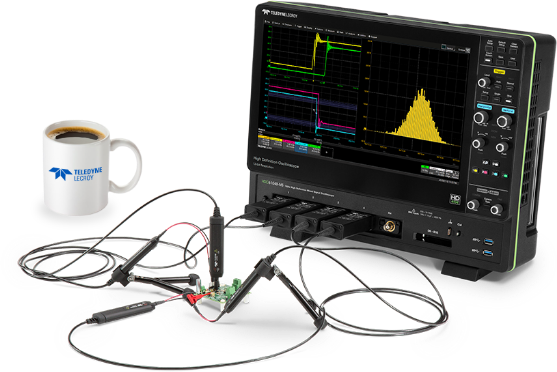
Part 1: What is Oscilloscope Resolution?
Available On-Demand
In this webinar, we discuss what oscilloscope vertical resolution is, what higher resolution provides, how to get the most out of your oscilloscope resolution, and how to tell the difference between a high and low-performance high-resolution oscilloscope.
Part 2: How Much Bandwidth Do I Need in My Oscilloscope?
Available On-Demand
In this webinar, we define what analog bandwidth is and review what that means in the context of an oscilloscope. We will also provide information on ways you use your oscilloscope may actually reduce its rated bandwidth.
Part 3: How is Rise Time Related to Bandwidth in an Oscilloscope?
Available On-Demand
In this webinar, we discuss the relationship between signal rise time and oscilloscope bandwidth and how to choose the right bandwidth of oscilloscope for your application.
Part 4: What is Oscilloscope Sample Rate and How Much Do I Need?
Available On-Demand
In this webinar, we define what a sample rate is and what a high sample rate provides. We also describe the minimum sample rates required and maximum practical sample rates needed for your signal and your oscilloscope.
Part 5: How Much Memory Do I Need to Use in my Oscilloscope?
Available On-Demand
In this webinar, we define what acquisition memory is in a digital oscilloscope. We also define how acquisition memory, sample rate, and capture time are interrelated.
Part 6: How Can I Reduce Noise on Signals Measured With an Oscilloscope?
Available On-Demand
In this webinar, we describe common causes of oscilloscope noise and how additive noise from the oscilloscope can be reduced to improve the quality of your measurement result, regardless of the starting resolution/noise of your oscilloscope.
Part 7: How Do I Make a Current Measurement with an Oscilloscope?
Available On-Demand
In this webinar, we describe the various methods to acquire and display a scaled current signal using an oscilloscope’s voltage input. We also describe the advantages and drawbacks of each method.
Part 8: How Do I Measure Current on an Oscilloscope Using a Shunt Resistor?
Available On-Demand
In this webinar we we provide practical guidance on how to probe the voltage drop across the shunt resistor to minimize noise and accurately measure the current on your oscilloscope.
Part 9: How Do I Make a Differential Measurement on an Oscilloscope Using Passive Probes?
Available On-Demand
In this webinar, we explain how a differential voltage probe works and how two passive probes can be used to make the same type of measurement on an oscilloscope.
Part 10: How Do I Rescale a Sensor to Use With an Oscilloscope?
Available On-Demand
In this webinar, we will describe various techniques used to take sensor outputs and rescale them into appropriate and useful non-voltage scientific units, such as Pascals, Volt/meter, Webers, Newton-meter, revolution/minute (RPM), etc. for display as an easily understandable waveform on an oscilloscope.
Part 11: How Do I Make an XY Display on an Oscilloscope?
Available On-Demand
In this webinar, we will provide typical examples of XY plots and how they are created to provide a more complete picture of the circuit or system operation.
Part 12: How Do I Make 3-phase Power Measurements with an Oscilloscope?
Available On-Demand
In this webinar, we will provide a mathematical explanation of the power calculations used in power analyzers and oscilloscopes and how both instruments identify a power cycle during which to calculate values.
Access other Years
2021 Oscilloscope Coffee Break Webinars